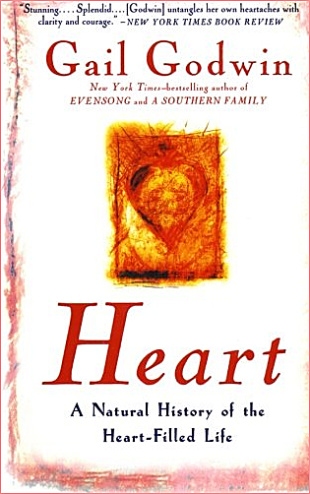Imagine you are sitting down with novelist Gail Godwin for an intimate and wide-ranging conversation about the heart and the immense and varied role it has played in literature, myth, religion, philosophy, medicine, and the fine arts. Like us, you will soon be totally caught up in the thoughts she presents in this deeply spiritual book. We consider it an essential text for our remedial course on heart skills.
Godwin quotes Marie Louise von Franz who wrote in 1988: "In our modern world we have achieved sexual freedom. Now comes the much bigger problem, the liberation of the heart. That is the program of the next fifty years." We couldn't agree more. The contemporary culture exalts reason as ruled by the head above the discernment of the heart. People seem ill at ease with the idea and reality of looking within. We are all "children of the Great Heart Split" as Godwin puts it. And that fissure causes many problems, including widespread depression, fear, and anger. The newspapers and the media are filled with stories illustrating heartlessness or the heart of darkness. More than ever, we need tutoring in "heart skills" that include kindness, reverence, openness, compassion, and hospitality.
With grace and flair, Godwin takes us on a royal tour of ideas, stories, and anecdotes about heart beginning with the oldest artistic representation of the heart on a Spanish cave wall in 10,000 B.C. to the most recent books on heart by the Dalai Lama, Thomas Keating, and Paul Pearsall. She is especially cogent in her musings on this seat of wisdom for the Jews, "the great fulcrum of the universe" for Hindus, the throne of God for Sufis, the source of ethics for Confucians, and the true home for the Kingdom of God according to Jesus.
The author celebrates the Kama Sutra as "a guide for keeping the principle of desire alive and balanced in the human heart and therefore in the cosmos at large." The Sufis, known as devotees of the heart, devised manuals for paying close attention to others. Godwin also salutes the human hearted behavior of Socrates, Jesus, Muhammad, Rainer Maria Rilke, George Herbert, Paul Klee, Pierre de Chardin, and others. She shares some of the heartbreak experienced in her brother's suicide and ponders the many "sinkholes of heart absence" in our society of go-getters who tend to view any mystical connections to others as hokum.
In a time when the rift between head and heart still reigns, this is a pioneering work that deserves a wide reading. The same sensitivity, imagination, and adventuresomeness that have been the hallmarks of Godwin's novels shine through these pages. Take this book to heart and let it inspire your inner work.
